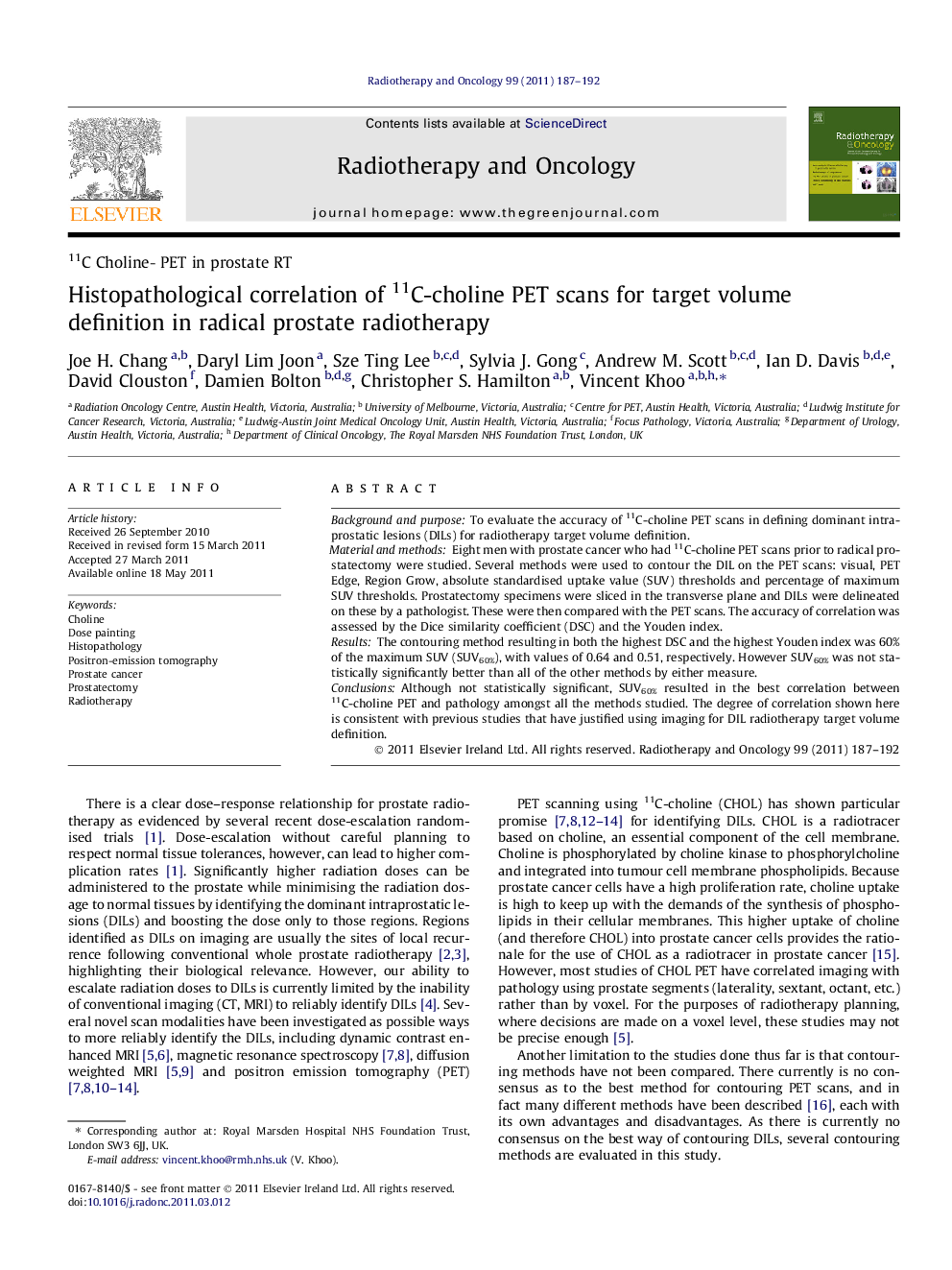| Article ID | Journal | Published Year | Pages | File Type |
|---|---|---|---|---|
| 2158571 | Radiotherapy and Oncology | 2011 | 6 Pages |
Background and purposeTo evaluate the accuracy of 11C-choline PET scans in defining dominant intraprostatic lesions (DILs) for radiotherapy target volume definition.Material and methodsEight men with prostate cancer who had 11C-choline PET scans prior to radical prostatectomy were studied. Several methods were used to contour the DIL on the PET scans: visual, PET Edge, Region Grow, absolute standardised uptake value (SUV) thresholds and percentage of maximum SUV thresholds. Prostatectomy specimens were sliced in the transverse plane and DILs were delineated on these by a pathologist. These were then compared with the PET scans. The accuracy of correlation was assessed by the Dice similarity coefficient (DSC) and the Youden index.ResultsThe contouring method resulting in both the highest DSC and the highest Youden index was 60% of the maximum SUV (SUV60%), with values of 0.64 and 0.51, respectively. However SUV60% was not statistically significantly better than all of the other methods by either measure.ConclusionsAlthough not statistically significant, SUV60% resulted in the best correlation between 11C-choline PET and pathology amongst all the methods studied. The degree of correlation shown here is consistent with previous studies that have justified using imaging for DIL radiotherapy target volume definition.
